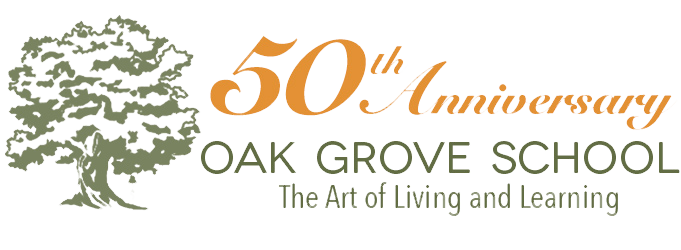My relationship with Oak Grove began when I first visited the campus in 1997. I had never been to Ojai before. My husband Kevin and I came up for the day to see the Krishnamurti school. It was a weekend, so quiet, but I felt connected to this place instantly. This campus has a magic that is difficult to put into words.
Technology keeps us connected in ways not possible during other times in human history. It has saved lives, improved efficiencies, and made for more effective communication. Technology allows us to work remotely, which can have a positive impact on our carbon footprint.
Oak Grove is thrilled to support an on-campus residency with Benjamin Mertz, composer, performer, and song leader who specializes in music of the Black Spiritual tradition.
“Emergent Curriculum,” is just what it sounds like. Teachers observe and listen to children for insight into their interests and hypotheses.
Interacting with the greater Krishnamurti community, immersing themselves in a different culture, and making new friends at their sister schools are three of the intentions of Oak Grove’s annual senior trip to India.
At Oak Grove School, students learn without competition. They learn in an environment where teachers call them by their first names, in classes small enough where every voice can seek and be heard.
The student newspaper is a great way for students to engage with peers on important topics and to find a communal voice for change, as well as to develop their own individual voices.
The intention of Pastoral Care Time is to honor the start of a new day, to mark the transition from home to school.
Oak Grove high school students collaborate with government agencies in a clean-up effort.
How can the community cultivate a culture that puts people first – that fosters trust and connection, empowers people with resources and support, and inspires all learners to actively engage in their own learning?
CONTACT OAK GROVE
Oak Grove School of the Krishnamurti Foundation of America
CALL: 805 646 8236
EMAIL: info@oakgroveschool.org
MAIL: 220 West Lomita Avenue
Ojai, California 93023-2244
Latest News
 Annual Fundraising TeaNovember 20, 2025 - 10:49 am
Annual Fundraising TeaNovember 20, 2025 - 10:49 am The Art of Living & LearningNovember 19, 2025 - 5:08 pm
The Art of Living & LearningNovember 19, 2025 - 5:08 pm Gratitude is HumblingNovember 17, 2025 - 2:01 pm
Gratitude is HumblingNovember 17, 2025 - 2:01 pm High School Info Night 12-2-25November 13, 2025 - 11:18 am
High School Info Night 12-2-25November 13, 2025 - 11:18 am Reflections from the KFI Teachers’ ConferenceNovember 5, 2025 - 4:07 pm
Reflections from the KFI Teachers’ ConferenceNovember 5, 2025 - 4:07 pm
Non-Discrimination Policy
Oak Grove School does not discriminate on the basis of any individual or group identity characteristics, such as but not limited to race, color, gender identity or expression, sexual orientation, age, national or ethnic origin, differing mental or physical abilities, or family structure in the administration of its educational or admissions policies, employment practices, scholarship, and other school-administered programs. View the unabridged policy.


